The latest Kona Process 153 rolls on 29in wheels and sits in the middle of the Process range; the longer travel Process X on one side, the shorter travel Process 134 on the other.
- Brand: Kona
- Product: Process 153 DL 29
- Price: £4,099
- From: Kona
- Review by: James Vincent for 3 months
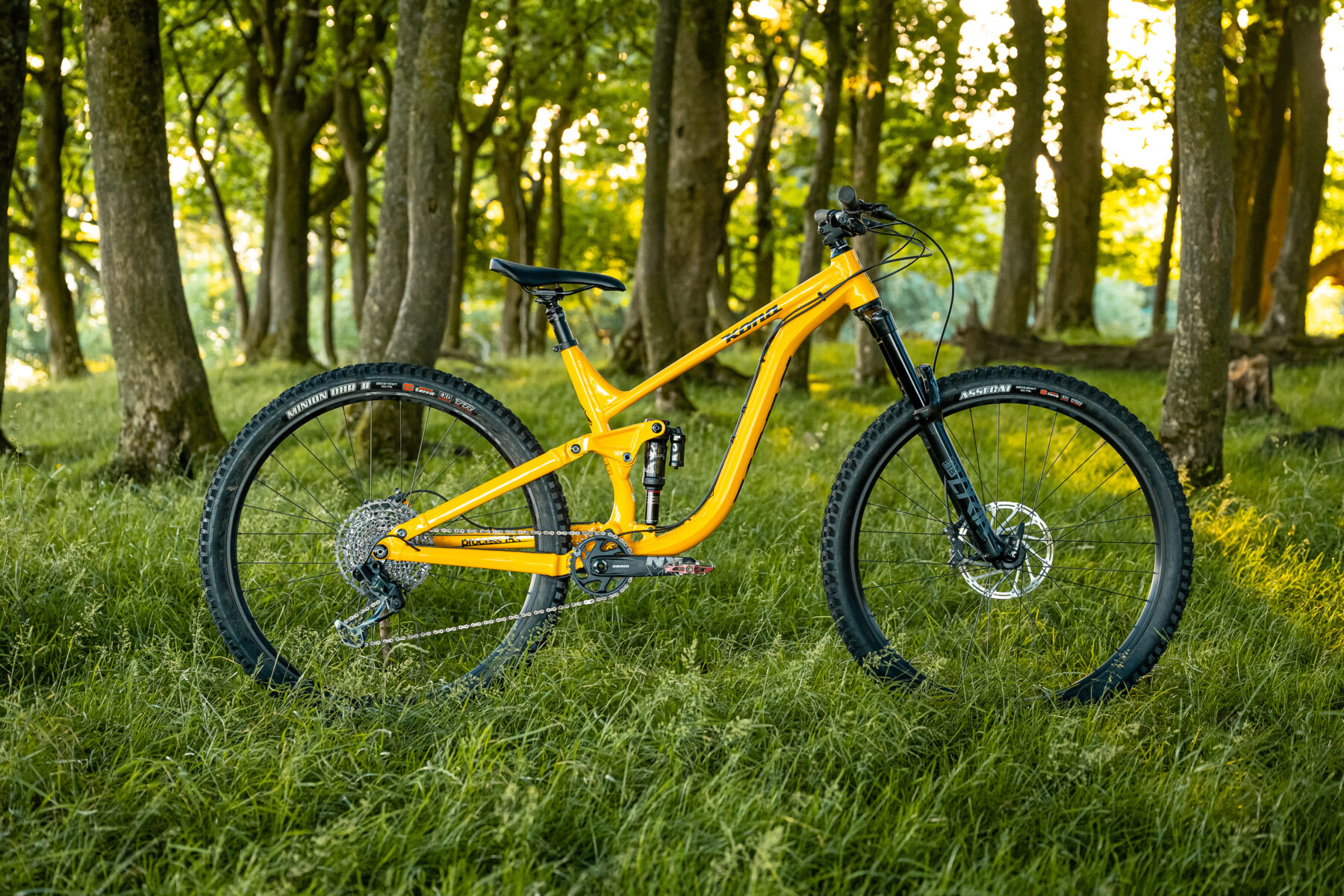
Three things I loved
- The geometry. Like all Konas it’s sorted
- The rear suspension
- That yellow
Three things I’d change
- Average brakes
- And fork
- Heavy for what it is
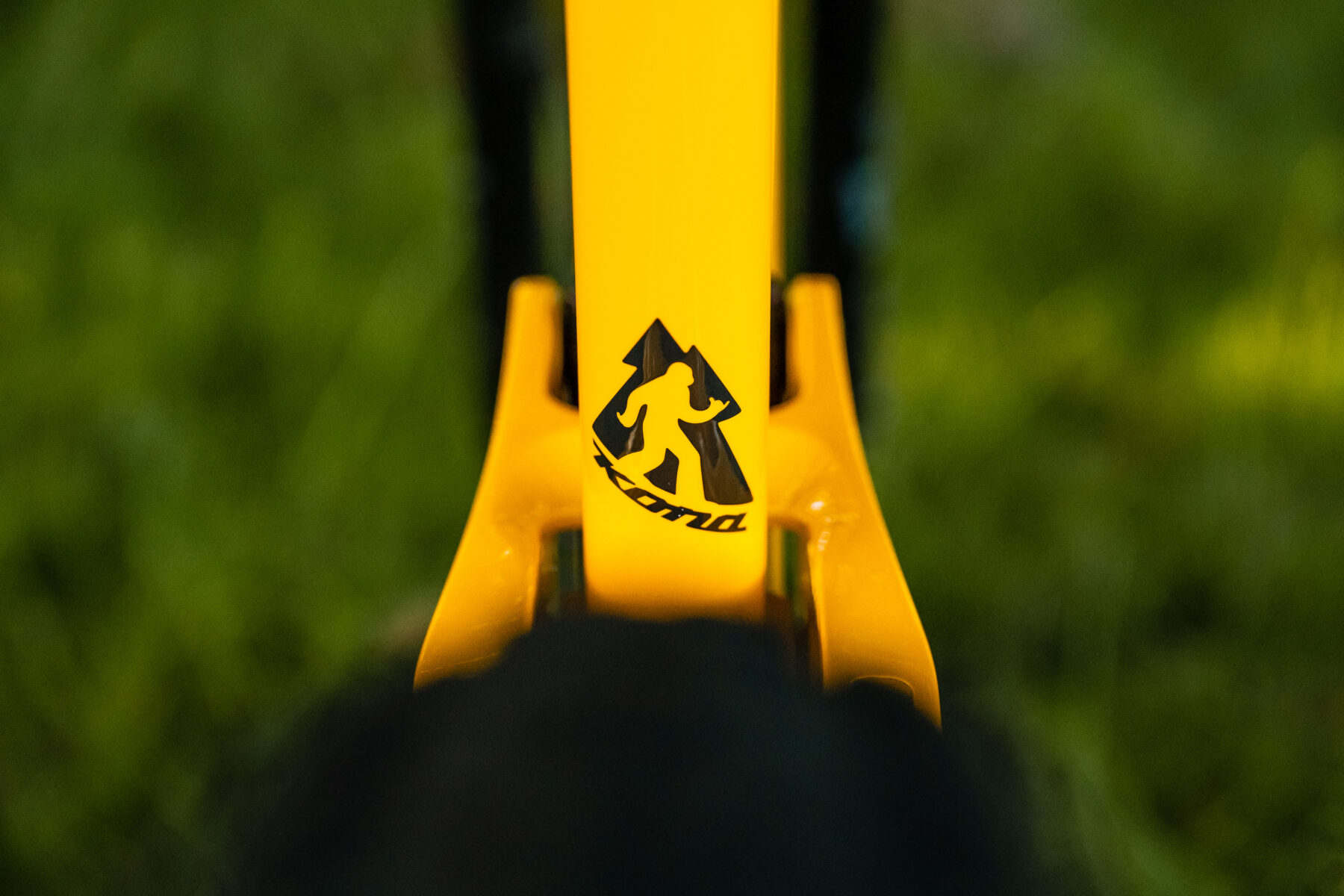
Ahh, Kona! We go back a long way. Back when I first started riding, I lusted after their steel hardtails, and was lucky enough to own a titanium Hei Hei in the late 90s. I sold it for something more sensible when I moved to the Lake District, and eventually found myself rolling around on one of the original green Process 153s for a few years. It was a brilliant bike, with 27.5in wheels, a short back-end and confidence inspiring geometry, helping me tame technical trails with ease.
The Kona Process 153 DL 29 frame is made entirely from 6061 aluminium, with no mullet or carbon options (for now) – you’ll have to step up to the Process X and its 162mm of travel if you want carbon. Personally, I see no reason to have a carbon frame purely for the sake of it, so don’t have a problem with this. Added to which, I suspect that most – if not all – riders would be hard pushed to tell the difference in a blind test. There is also a Process 153 with 27.5in wheels should you so desire, but you’ll have to take a hit on the spec if you do, as there’s no DL option.
It could be argued that 153mm is no longer enough travel for serious enduro racing, so let’s dive in and see where the Process 153 DL 29 finds itself.
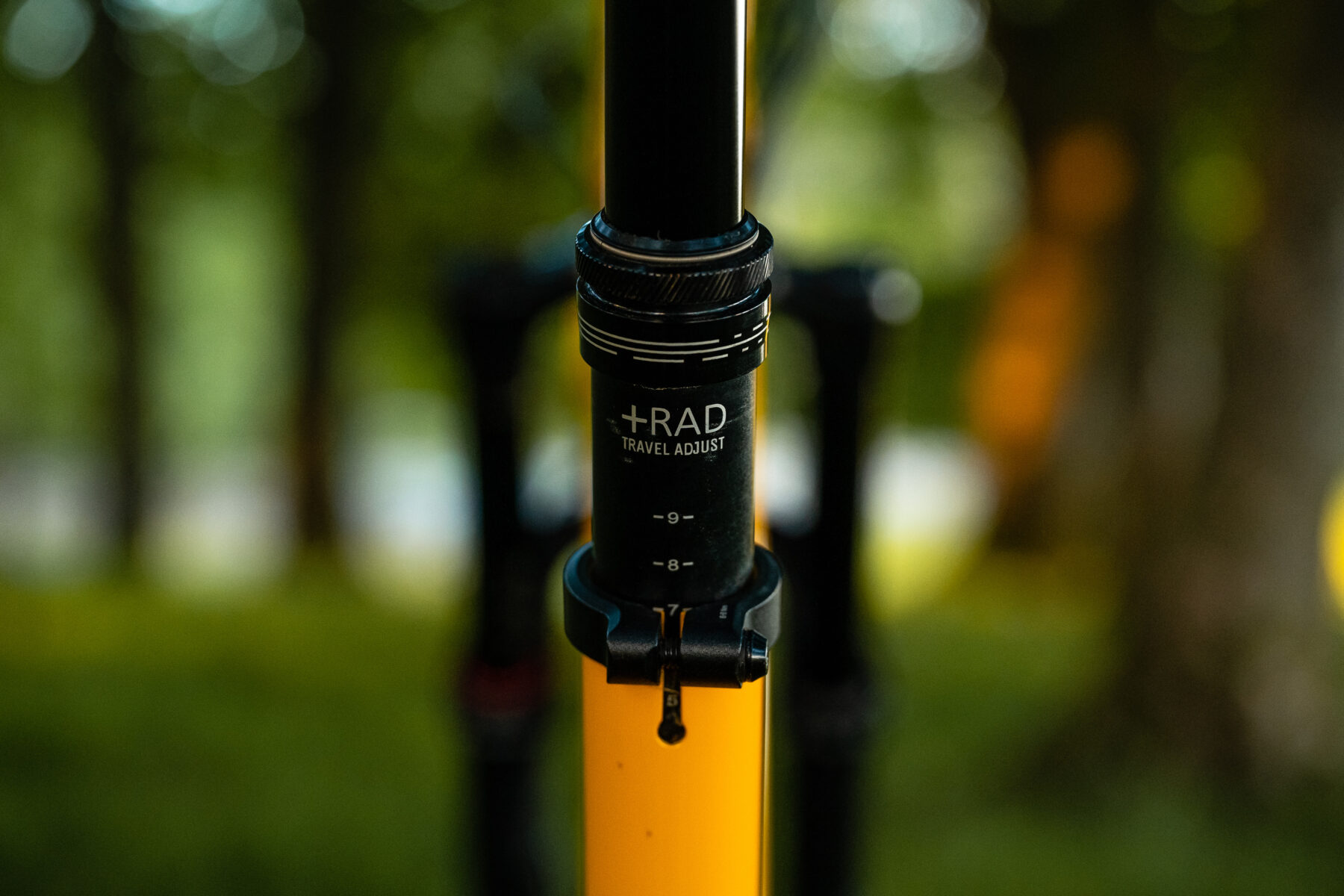
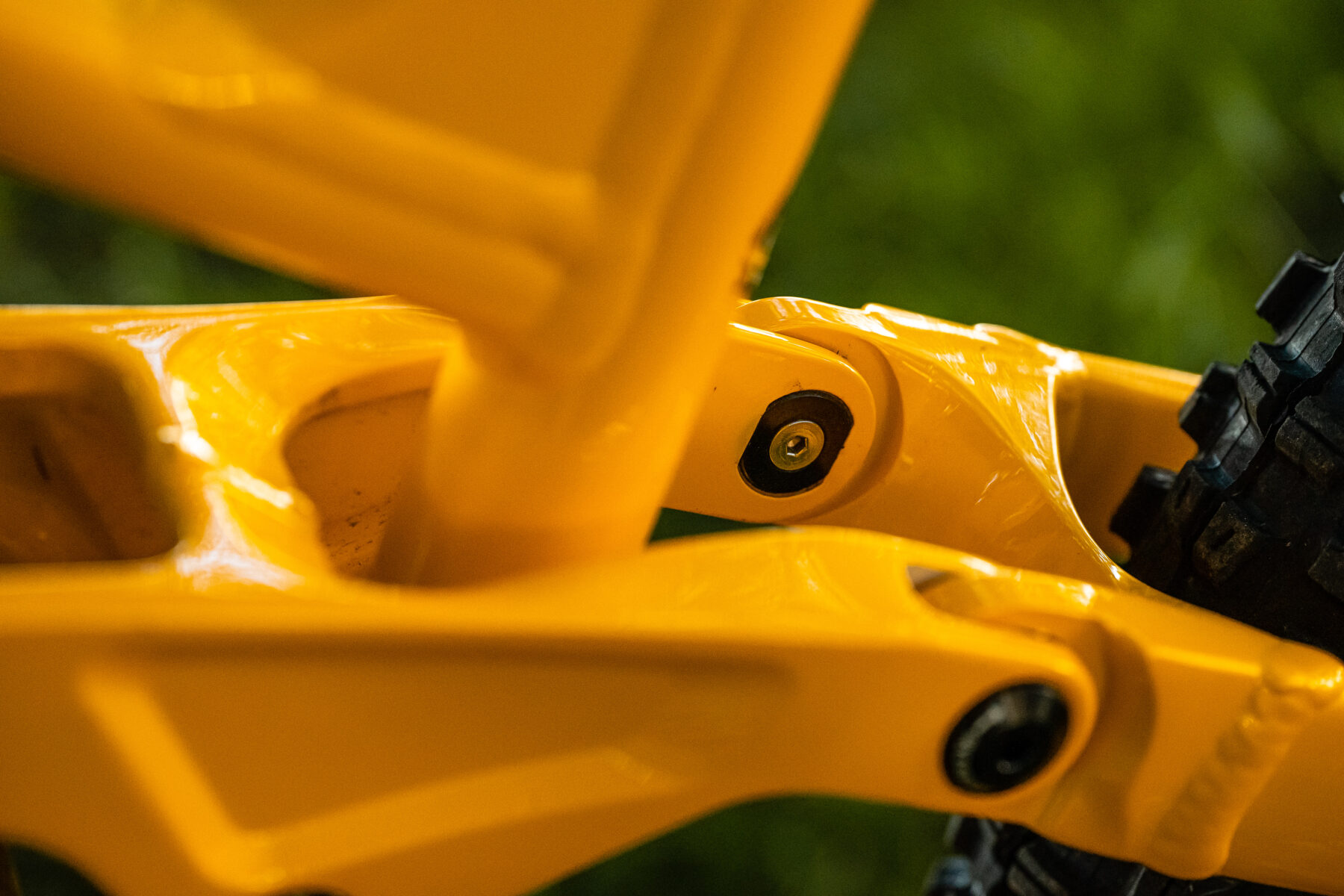


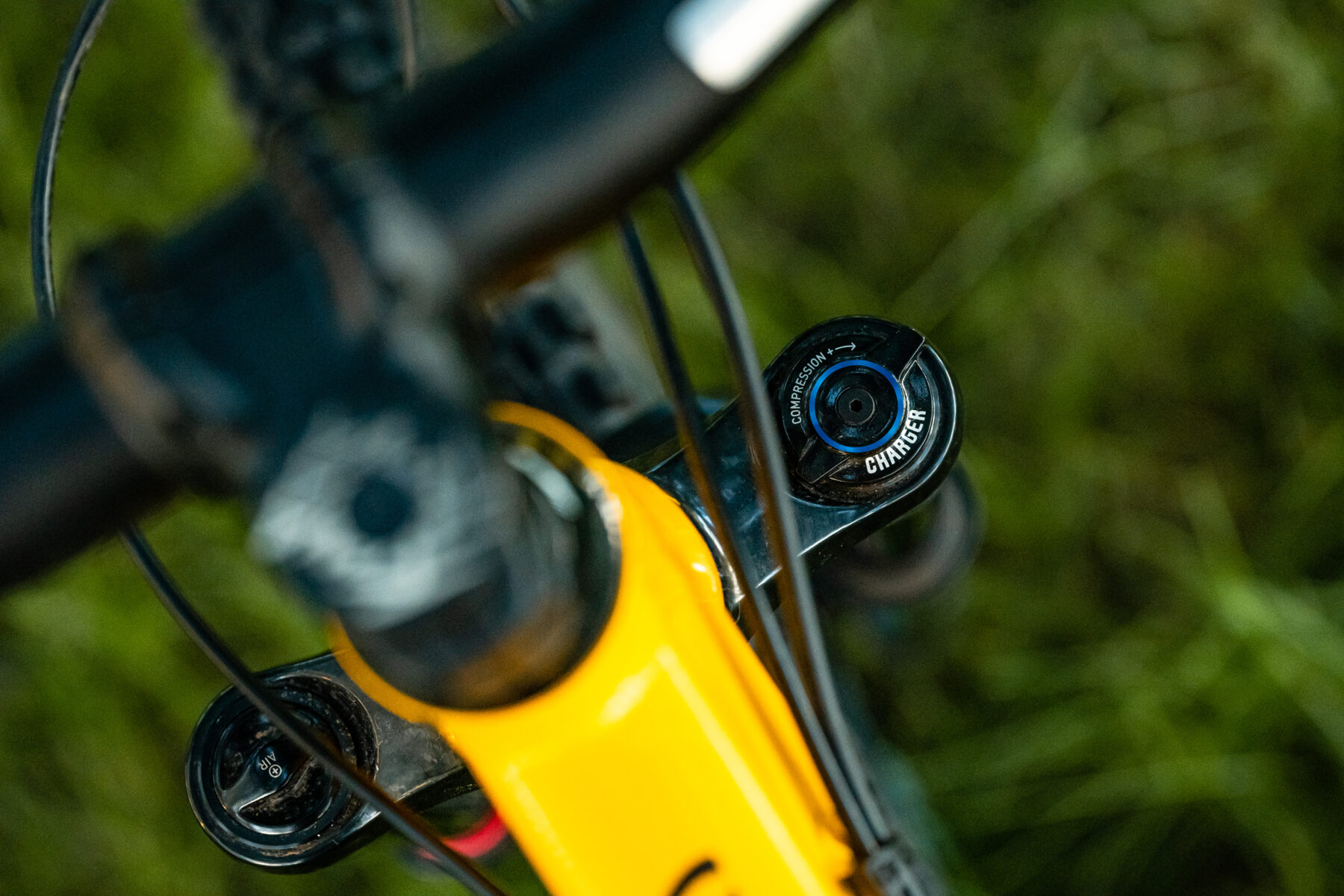


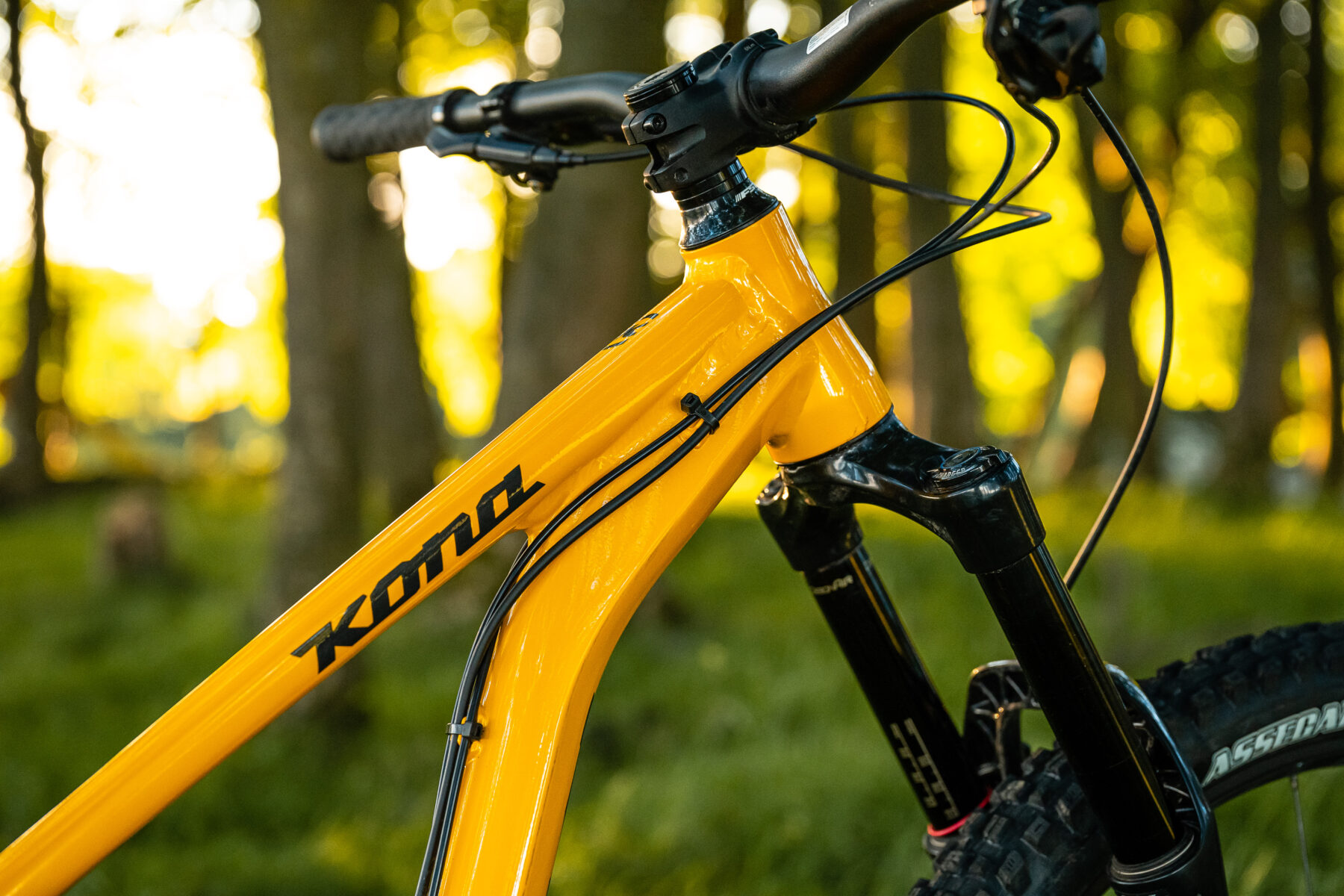
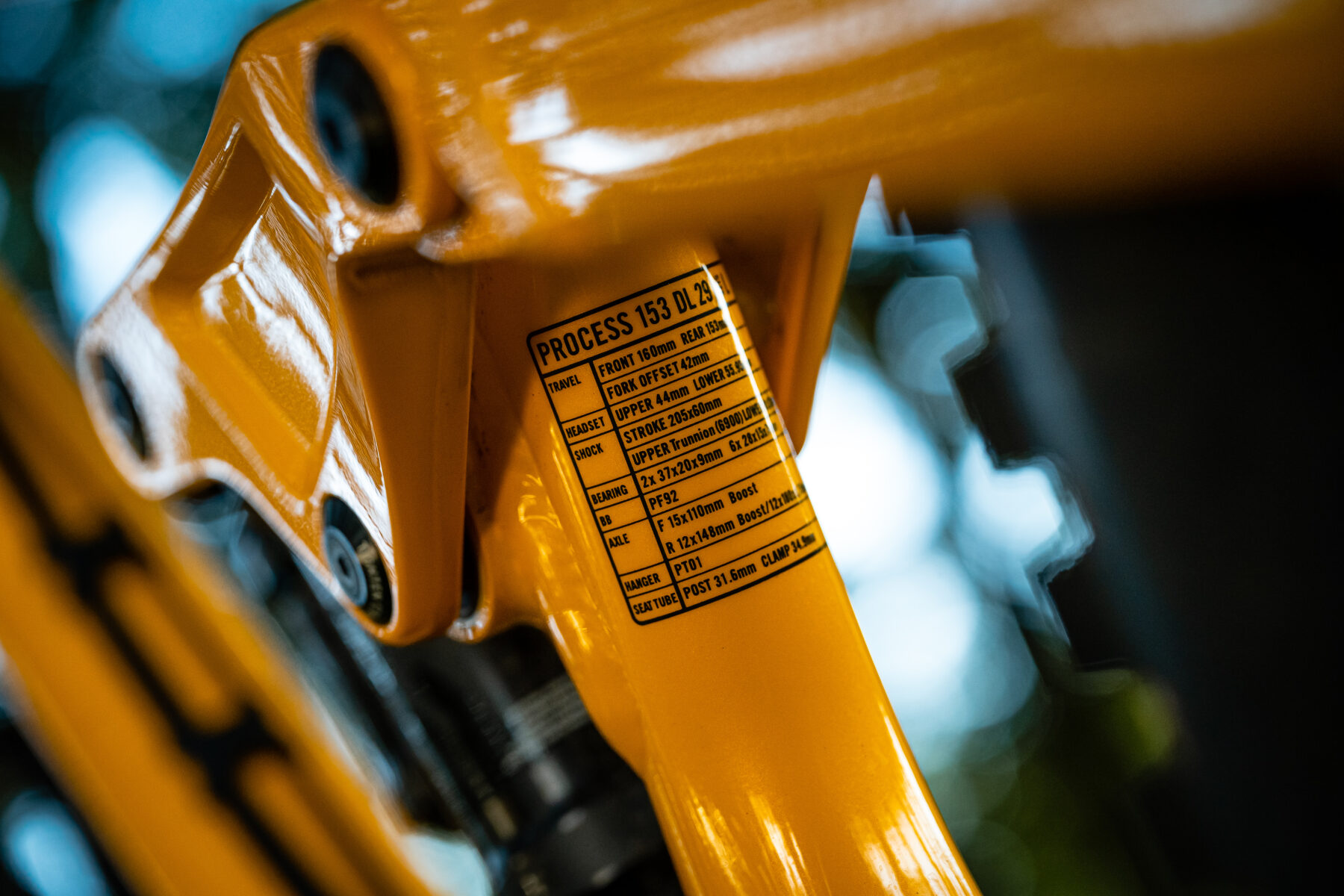
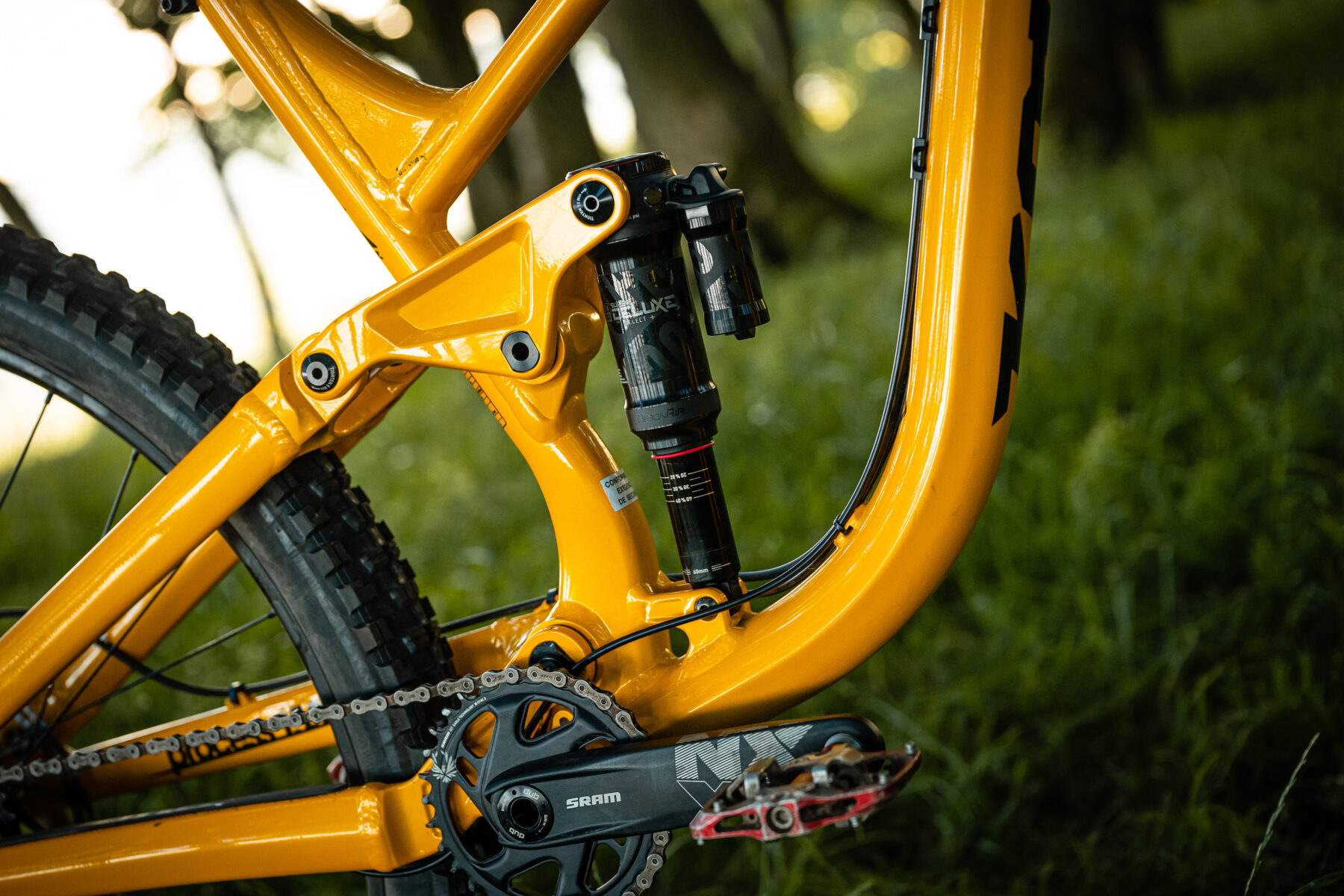
It’s a no nonsense, well constructed frame, designed for years of abuse – chunky and uniform welds abound and the bright yellow paint is tough and resistant to chipping. Seasoned riders will appreciate the fully external cable routing (except for the dropper post cable through the seat tube and a short section of the gear cable through the chainstay), and yes, there’s space for a bottle cage in the main frame. One other nice touch is the little graphic on the seat tube detailing all the key component sizes and specifications. I wish more manufacturers did this.
The 153mm of rear suspension comes via Kona’s Beamer platform, which is ultimately a linkage driven single pivot (the pivot is on the seat stay rather than the chain stay). Like a lot of similar suspension layouts, the main pivot is in line with the (32t) chainring to avoid pedalling forces interfering too much with the suspension action.
Moving onto the geometry, the 64.5° head angle is slack but not too slack, and this, coupled to a 76.7° seat angle with a reach of 480mm, puts you in a very good seated position. There’s also a ton of standover clearance (710mm on this size large), although the seat tube itself is a little long at 450mm.
In contrast, the short head tube gives lots of flexibility on sizing (via swapping in different rise handlebars depending on rider height). The chainstays are one size only throughout the size range, and there are no geometry adjustments or flip chips in sight. In reality though, most of us tend to leave any adjustment in the lowest and slackest position (or whichever gives the most travel), so again it’s no big loss. Ultimately, it all adds up to a frame that’s ideal for aggressive trail riding, if not warp speed blasting. Nimble, but not XC twitchy. Stable, but not impossible to turn when you get to a corner.
Components
Most of the components come from the SRAM family. There’s a RockShox Lyrik Select RC propping up the front, paired with a Super Deluxe Select Plus at the back. More on these later…
Gears are a mix of SRAM NX and SX with a GX rear mech. I don’t quite know why the bike industry insists on doing this – I’ve always had better results from pairing a nicer shifter with a rear mech from a lower range. The NX shifter worked fine, but felt a little plasticky. The biggest drawback with the gears however, was the 11-50 NX cassette. It’s a weighty beast, and I genuinely missed having a 10t cog. Additionally, if you ever want to upgrade it, it uses the standard old-school Shimano-style freehub body which is incompatible with anything less than an 11t smallest sprocket.
SRAM G2 RS brakes with 200mm and 180mm rotors do their best to bring this yellow machine to a stop, but are a little underpowered. The RS models lack the bite point adjustment of the RSC, which meant I had to run the levers further out than I would like. For the intended use of the bike and capability of the frame, I feel that SRAM Codes would be a better fit – they’re considerably more powerful, with a minimal weight penalty.
Maxxis Assegai and Minion DHR II tyres are a fantastic year-round tread combo, but the EXO casing is a little light for my liking. I ride in the Lakes where it’s not uncommon to run full DH casings, but even an EXO+ at the rear would help unlock some more of the frame’s potential. As it is I had to run higher pressures than normal at the expense of traction. Wheels are unlabelled Formula hubs laced to WTB KOM Trail rims with plain gauge spokes, and have been faultless throughout the test.
The TranzX Dropper post with +RAD features 170mm total drop, but this travel can easily be reduced by up to 30mm. As it is, I could easily fit a 210mm dropper post into the frame and still not have the post slammed, so while I didn’t use this feature, it could be useful to some shorter riders on smaller frames. The rest of the finishing kit is Kona own brand, and is all good stuff – other than the grips which are uncomfortably thin.
Set-up
At a shade over 6ft with average length limbs, I consider myself lucky. I’ve never really had an issue with bike sizing, as I don’t fall between sizes, and it seems like most large bikes are designed around someone my height. The Kona Process 153 DL 29 is no exception and the large was a perfect fit from the get go.
I initially set the forks with around 25% sag, and enjoyed how supple they were off the top, but quickly discovered they dived way too much on steeper trails, and didn’t offer much in the way of mid stroke support. Oddly, I wasn’t getting full travel on them either, so removed one of the two tokens in an attempt to make them less progressive. This made them even worse in the mid stroke, so I promptly put the token back in. By the end of the test I was running just under 20% sag which gave me the support I needed on steeper trails at the expense of small bump sensitivity.
Possibly because I struggled so much to get the front of the bike working right, the rear shock was much easier to set up. I simply settled on 30% sag, and left it to do its thing.
Ride
Round trail centres and on less gnarly terrain, the Process 153 DL 29 is an incredibly fun bike to ride. It climbs to the top of the trail without too much fuss (making good use of the shock lockout), although at over 15kg it’s never going to be the most spritely of climbers. Once at the top, I was able to get the suspension to a place where I was happy enough with it, I could stop worrying about the tyre sidewalls and just enjoy the ride. The Process feels nicely balanced, and the relatively neutral geometry is a boon, helping keep things lively without being boring that might come if it was any longer or slacker.
When heading away from trail centres and onto terrain that demands a bit more confidence from a bike, I didn’t get on quite as well with this build of the Kona Process 153. The fork was either too soft and dived on steep trails and under braking, or it was too harsh and front end grip suffered over roots and rocks. All of which means that the front end felt skittish and unplanted, and I generally lacked confidence in the bike to really push it into sections. In an ideal world I’d have dropped tyre pressures to compensate for this lack of grip, but at 90kg loaded up and riding in the Lakes, I know that if I try to run much less than 25psi in an EXO casing then it’s only a matter of time before it’s going to have a hole in it.
Value
On the one hand, and bearing in mind the current state of the cycle industry, a full suspension mountain bike coming in at about £4k with 12 speed SRAM gears, Rockshox suspension, and Maxxis tyres should be considered good value on paper, especially when compared to more expensive bikes from some other manufacturers. However, when you delve a little deeper, you start to see that the Process 153 DL 29 is somewhat limited. There are bikes in its price range with better brakes, wheels, and drivetrain. Slight tweaks to all of these areas will make the bike more enjoyable to ride and help you have more fun.
Overall
I struggled with this Kona Process 153. It took me a long time to get to grips with the fork, and certain components really let down the rest of the ride. In particular, the SRAM G2 brakes felt underpowered, the 11t cassette was surprisingly limiting, and the lighter casing EXO tyres needed to be pumped up pretty hard to avoid pinch flats compromising grip. But most of all, I just didn’t get on with the fork. It was either too hard to be supple, or too soft to give any mid-stroke support.
This is a huge shame, as aside from these niggles, the frame and geometry of the Kona Process 153 felt great. With a better fork, better brakes and tougher tyres, this would be an excellent bike for all round trail riding. As it is, it’s sort of stuck in no-man’s land – too heavy for a dedicated trail centre bike, but not quite capable enough for heading into the wild without some serious upgrades.
Specification
- Frame // Kona 6061 Aluminium Butted 153mm Travel
- Shock // RockShox Super Deluxe Select+
- Fork // RockShox Lyrik Select RC Charger DebonAir 160mm Tapered 110mm Spacing
- Wheels // Formula hubs, WTB KOM Trail i30 rims, 14g plain gauge spokes
- Front Tyre // Maxxis Assegai EXO TR 3C 29×2.5″ WT
- Rear Tyre // Maxxis Minion DHR II EXO TR 3C 29×2.4″ WT
- Chainset // SRAM NX Eagle DUB, 32t X-Sync Eagle Chainring
- Shifter // SRAM NX-Eagle
- Rear Mech // SRAM GX-Eagle
- Cassette // SRAM NX-Eagle 11-50t 12spd
- Brakes // SRAM G2 RS, 200mm/180mm Centerline rotors
- Stem // Kona XC/BC 35
- Bars // Kona XC/BC 35
- Grips // Kona Key Grip
- Seatpost // TranzX Dropper +RAD Internal
- BB // SRAM DUB PF92
- Size Tested // L
- Sizes Available // M, L, XL
- Weight // 15.6kg
Geometry of our size L test bike:
- Head angle // 64.5°
- Effective seat angle // 76.7°
- Seat tube length // 450mm
- Head tube length // 108mm
- Chainstay // 435mm
- Wheelbase // 1,244mm
- Effective top tube // 628mm
- BB height // 345mm
- Reach // 480mm
Review Info
| Brand: | Kona |
| Product: | Process 153 DL 29 |
| From: | Kona |
| Price: | £4,099 |
| Tested: | by James Vincent for 3 months |
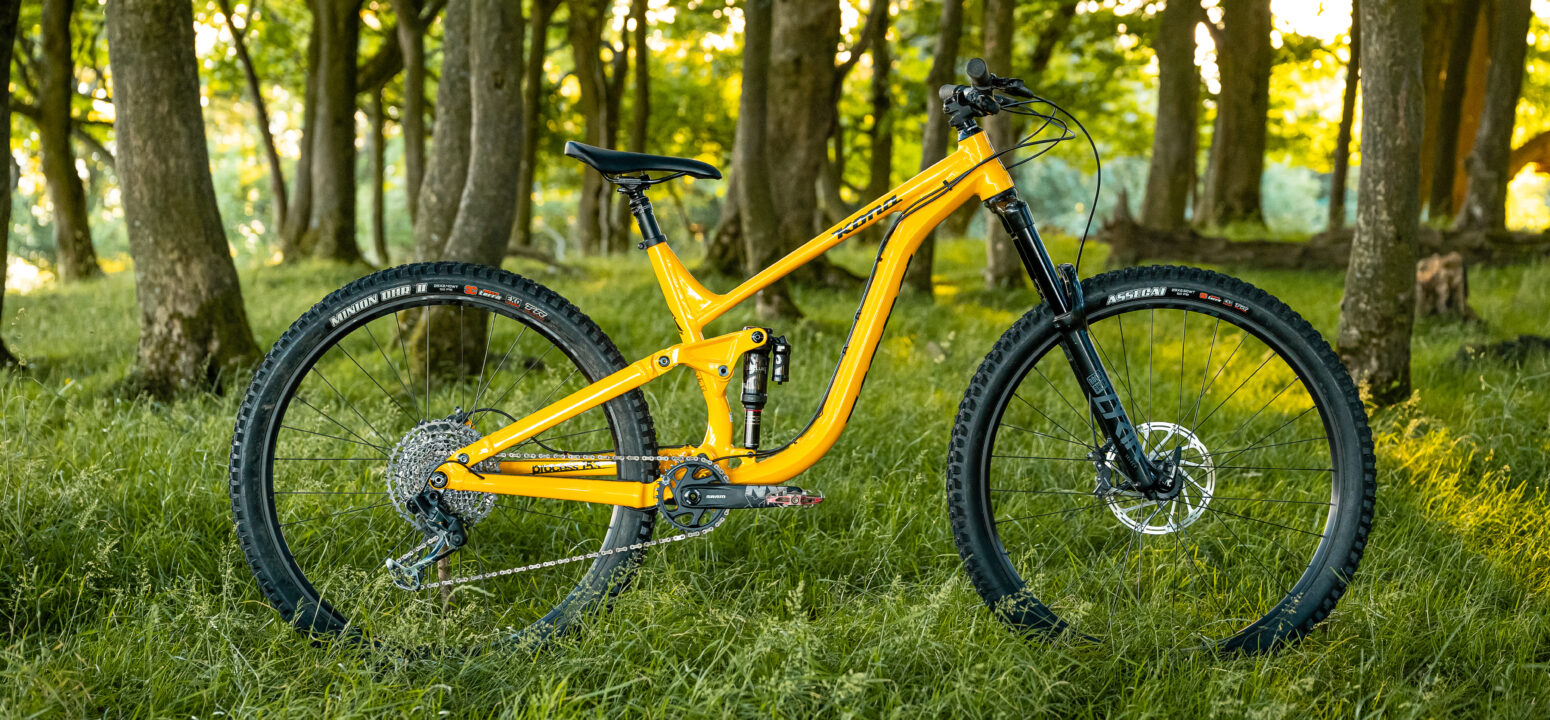

You must be logged in to reply to this topic.